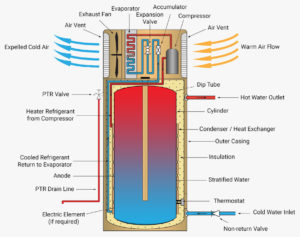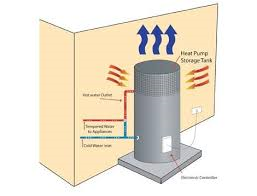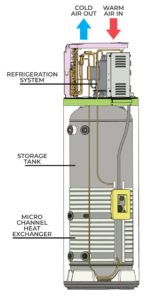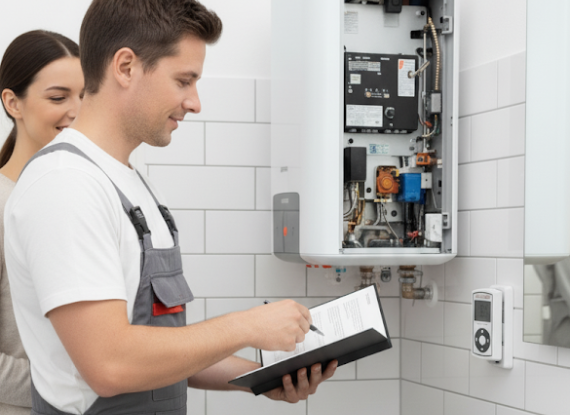Sunshine Coast Water Heaters describes how heat pump hot water systems operate through a sequence of steps that make them extremely efficient at heating water.
First, a liquid refrigerant travels through an evaporator where it draws heat from the surrounding air and evaporates into a gas. Next, that gas is pressurised by an electric compressor, raising its temperature until it is hotter than the water in the storage tank. The heated gas then passes into a condenser, where it transfers its warmth to the water and condenses back into a liquid. That liquid continues through an expansion valve where its pressure is lowered and it cools, allowing it to return to the evaporator and repeat the cycle.
Electricity powers the compressor and the fan, but unlike a conventional electric hot water unit that directly heats the water, a heat pump moves heat from the air into the water. This enables it to transfer far more heat energy while consuming much less electricity. Performance is influenced by ambient air temperature — when the air is warmer than the refrigerant the system easily absorbs heat; in cooler conditions efficiency falls, although newer models can function in sub-zero temperatures. Some units can also be installed indoors in well-ventilated large spaces such as garages.
To keep the evaporator absorbing heat continuously, the system needs a steady supply of fresh air. An integral fan circulates air and expels the cooled air back outside.
Heat pump water heaters come in two primary configurations. Integrated or compact units house the compressor and storage tank together in one package. Split systems separate the tank and compressor — similar to a split air conditioner — and link them with refrigerant piping.
For expert installation, repairs and advice on gas and electric hot water systems from a local Sunshine Coast plumber, contact Sunshine Coast Water Heaters.






